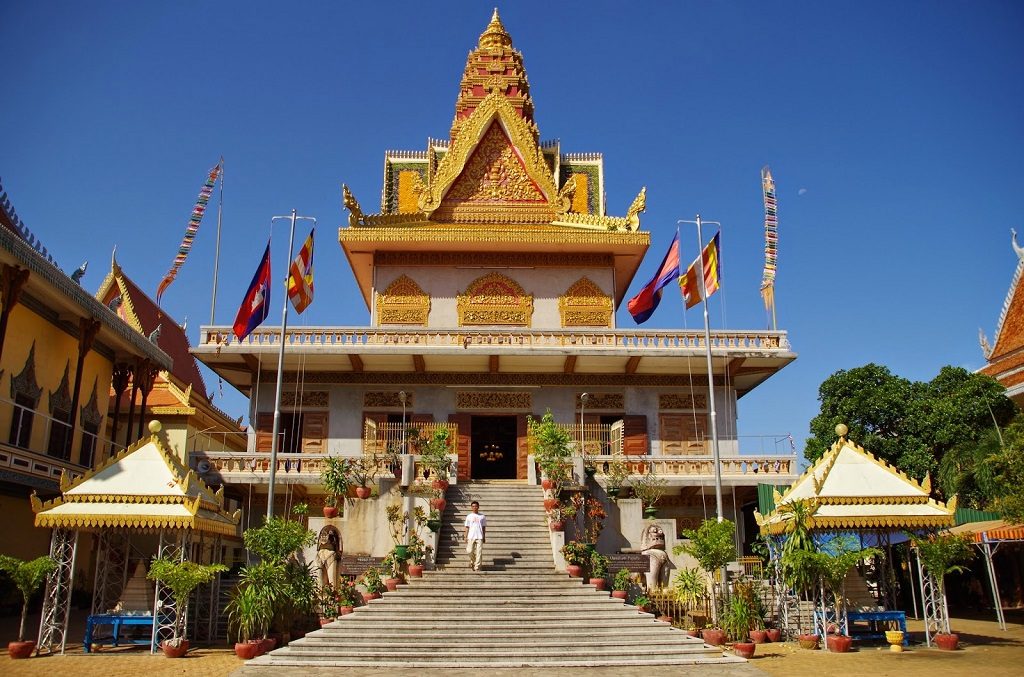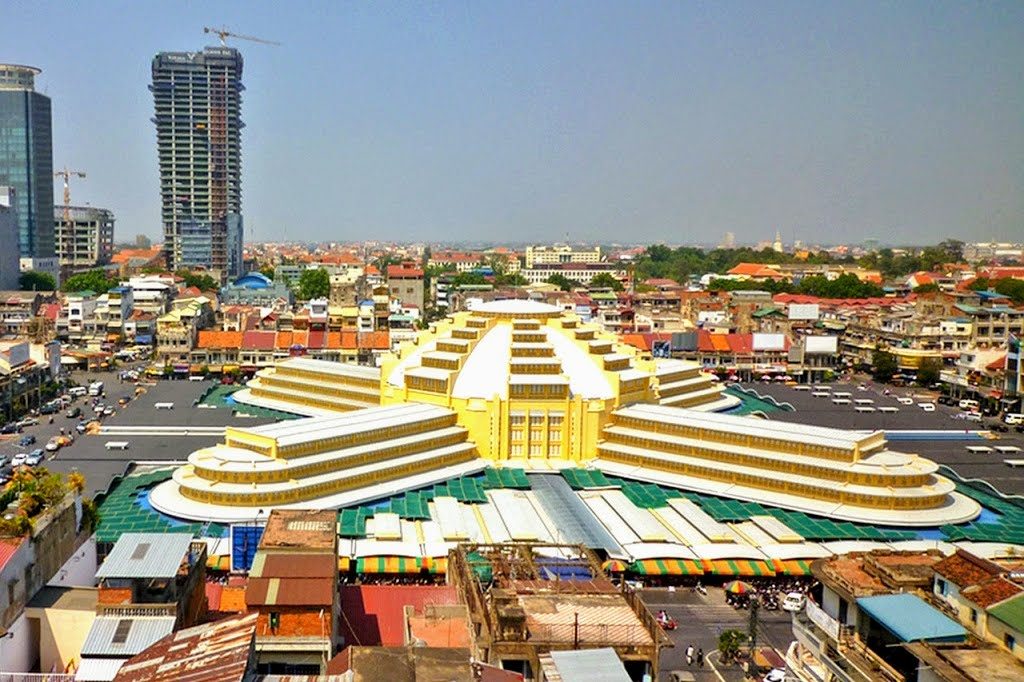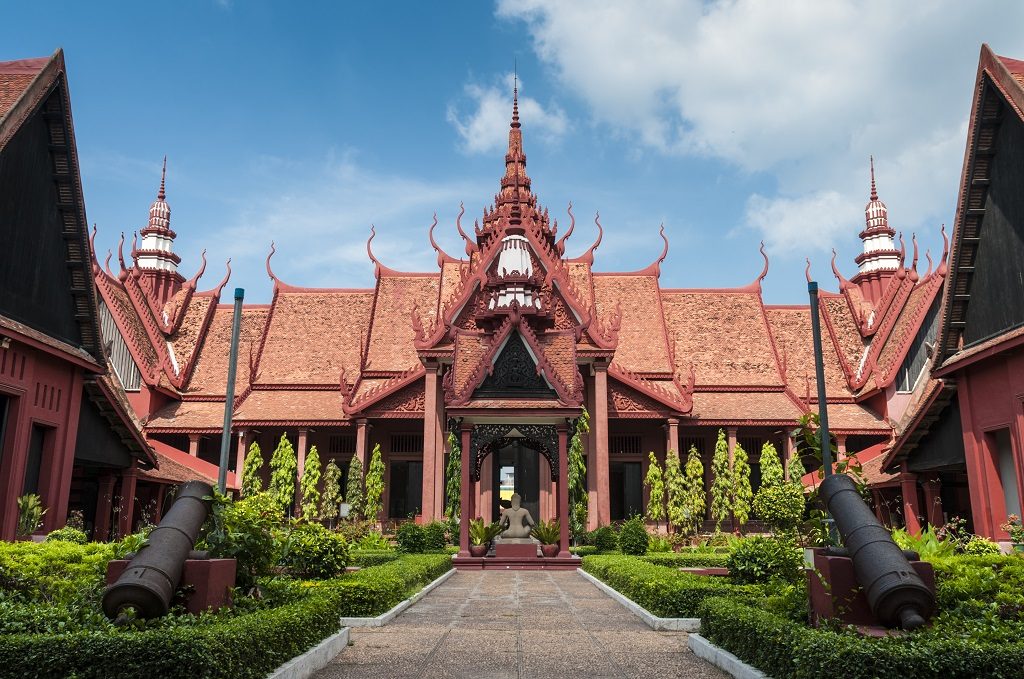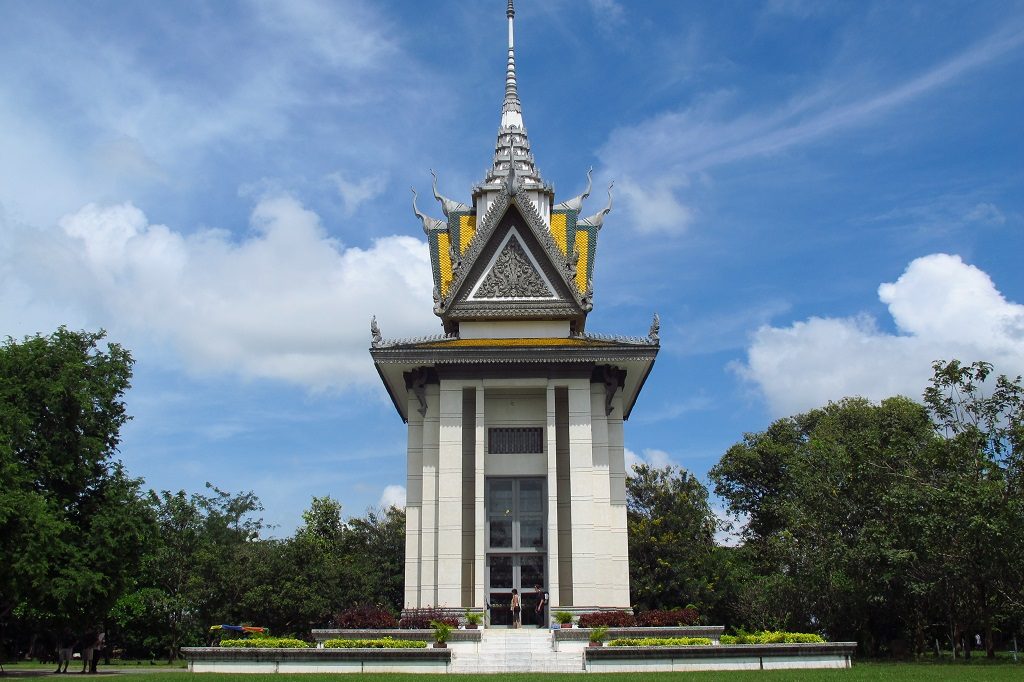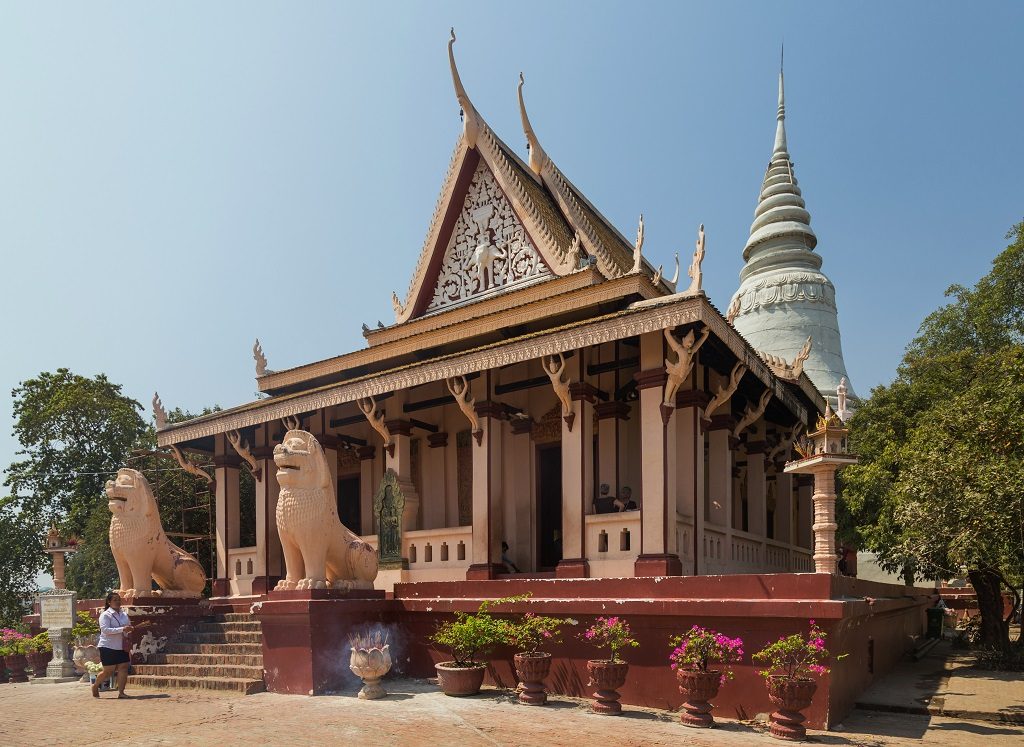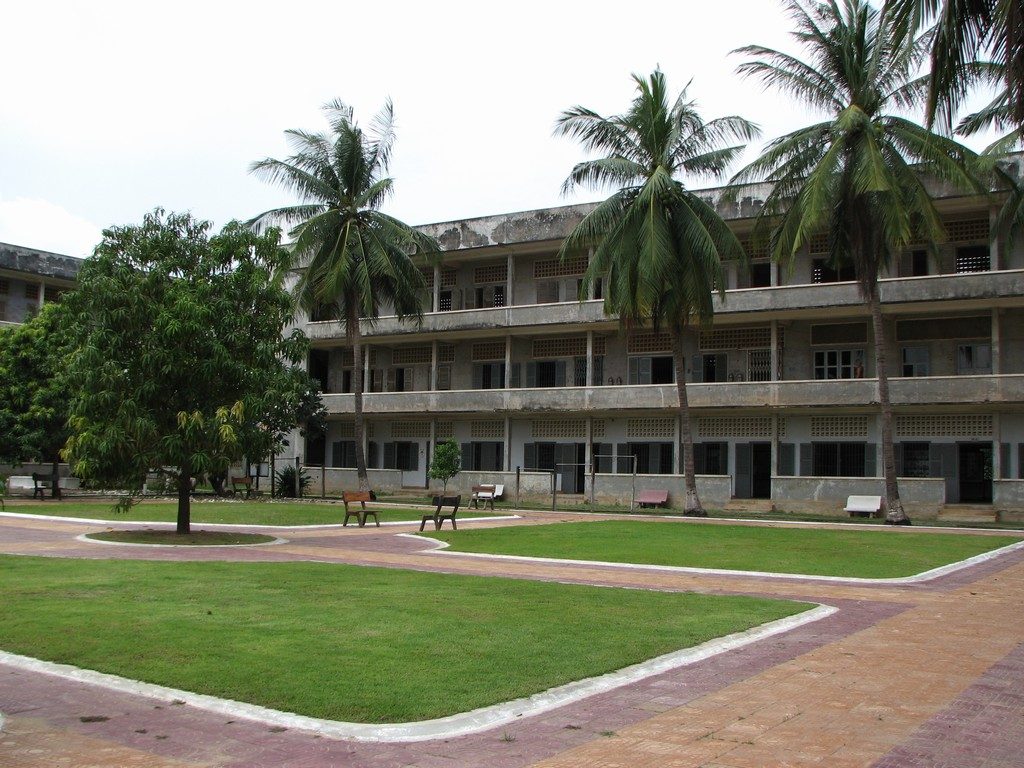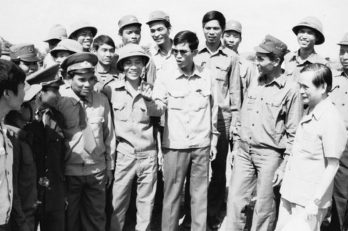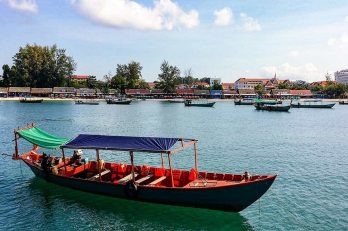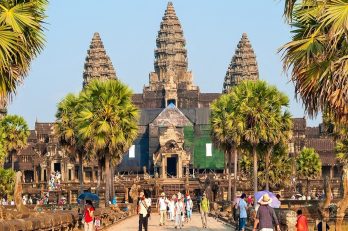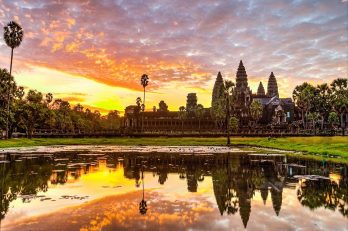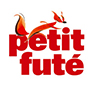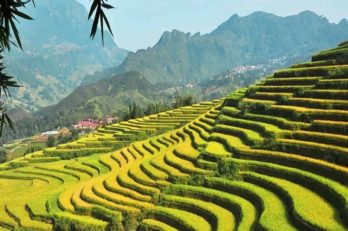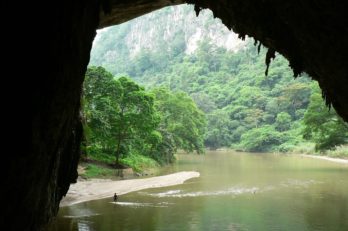Phnom Penh – The Capital of Cambodia
Phnom Penh is the vibrant bustling capital of Cambodia. Situated at the confluence of three rivers, the mighty Mekong, the Bassac and the great Tonle Sap, what was once considered the ‘Gem’ of Indochina. The capital city still maintains considerable charm with plenty to see. It exudes a sort of provincial charm and tranquillity with French colonial mansions and tree-lined boulevards amidst monumental Angkorian architecture. Phnom Penh is a veritable oasis compared to the modernity of other Asian capitals. A mixture of Asian exotica, the famous Cambodian hospitality awaits the visitors to the capital of the Kingdom of Cambodia.
Here in the capital, are many interesting touristy sites. Beside the Royal Palace, the Silver Pagoda, the National Museum, the Toul Sleng Genocide Museum, the Choeng Ek Killing Fields and Wat Phnom, there are several market places selling carvings, paintings, silk, silver, gems and even antiques. Indeed, an ideal destination for a leisurely day tour. The whole area including the outskirts of Phnom Penh is about 376 square kilometres big. There are currently 2,009,264 people living in Phnom Penh.
The city takes its name from the re-known Wat Phnom Daun Penh (nowadays: Wat Phnom or Hill Temple), which was built in 1373 to house five statues of Buddha on a man made hill 27 meters high. These five statues were floating down the Mekong in a Koki tree and an old wealthy widow named Daun Penh (Grandma Penh) saved them and set them up on this very hill for worshiping. Phnom Penh was also previously known as Krong Chaktomuk (Chaturmukha) meaning “City of Four Faces”. This name refers to the confluence where the Mekong, Bassac, and Tonle Sap rivers cross to form an “X” where the capital is situated.
Phnom Penh is also the gateway to an exotic land – the world heritage site, the largest religious complex in the world, the temples of Angkor in the west, the beaches of the southern coast and the ethnic minorities of the North-eastern provinces. There are also a wide variety of services including five star hotels and budget guest houses, fine international dining, sidewalk noodle shops, neighbourhood pubs international discos and more.
Phnom Penh, like other Asian-City tourist destinations, is in the midst of rapid change. Over the past few years the number of restaurants and hotels have grown considerably and in the last year there had been a huge increase in the number of visitors. Come and see a real original as it won’t be the same in a few years.
Geography
Phnom Penh is located in the southern heard of the country and fully surrounded by the Kandal Province. The municipality consists of the typical plain wet area for Cambodia, covering rice fields and other agricultural plantations. The province also features three of the biggest rivers of the country the Tonle Bassac, the Tonle Sap and the mighty Mekong.
All three rivers cross to form an “X” at their confluence, where the capital is situated. These rivers provide potential freshwater and other resources. The city, located at 11.55 N 104.91667? E (11?33′ North, 104?55′ East) covers an area of 375 square kilometres (145 sq mi) which some 11,401 hectares (28,172 acres) in the municipality and 26,106 hectares (64,509 acres) of roads. The agricultural land in the municipality amounts to 34.685 square kilometres (13 sq mi) with some 1.476 square kilometres (365 acres) under irrigation.
Population
The current population in this municipality is about 2,009,264 people or 14 % of the country?s total population (14,363,519 person in Cambodia, 2007, provincial government data), with 621,948 male and 658,833 female. The population density is therefore 5,343.8 people per square kilometre. The population is Original Khmer 60%, Chinese 15%, Vietnamese 20% and 5% other. The population growth in the city is about 3.9%.
Climate
The country has a tropical climate – warm and humid. In the monsoon season, abundant rain allows for the cultivation of a wide variety of crops. This year-round tropical climate makes Cambodia ideal for developing tourism. Travellers need not to fear natural disasters such as erupting volcanoes or earthquakes, and the country is not directly affected by tropical storms.
Climate: Cambodia can be visited throughout the year. However, those plans to travel extensively by road should be avoided the last two months of the rainy season when some countryside roads may be impassable. The average temperature is about 27 degrees Celsius; the minimum temperature is about 16 degrees. December and January are the coolest months, whereas the hottest is April.
General information about the provincial climate
- Cool season: November- March (22-28c)
- Hot season: March- May (28c -38c)
- Rainy season: May – October (24-32c, with humidity up to 90%.)
The city temperatures range from 15 to 38 C and experiences tropical monsoons. Monsoons blow from the Southwest inland, bringing moisture-laden winds from the Gulf of Thailand and Indian Ocean from May to October. The northeast monsoon ushers in the dry season, which lasts from November to March. The city experiences the heaviest precipitation from September to October with the driest period occurring from January to February.
10 Top Tourist Attractions in Phnom Penh
01 – Wat Ounalom
This complex of over forty buildings is considered the nation’s Buddhist headquarters. Founded in 1443, this lovely, ornate collection of Pagodas and relic-filled stupas is fun to explore. It is the home of the head of the Cambodian Buddhist brotherhood, as well as a number of other orange-clad monks. Higher accesses offer chances to see lesser-viewed artworks, and lovely views of the Mekong that few take the time to discover. Though damaged by the Khmer Rouge, much of the temple’s statuary has been restored and continues to be visited in holy pilgrimages. Of special note is the stupa containing an eyebrow hair of the Buddha himself, and an inscription in the ancient language of Pali.
02 – Independence Monument
This tower was created in 1958 to celebrate Cambodia’s freedom from French Colonial Rule five years earlier. It is modeled after the central tower of the country’s most famed ancient temple, Angkor Wat, and represents a lotus-shaped Stupa that also honors the war dead of Cambodia. The monument sits near a park that contains a number of other important statuary honoring war heroes and peace accords with neighboring nations like Vietnam. It is the center of many festivals held during national holidays, and is often adorned with flowers during celebrations, or enjoyed by the park goers during concerts, outdoor martial arts classes or other recreational activities.
03 – Russian Market
Though Phnom Penh’s most famed foreign occupation was that of the French, there is a notable Russian component to the city that came here during the cold war era of the early eighties. The Russian Market is a notable place to buy many discounted (though often not authentic) designer items at a tenth of US prices. Its handicrafts are equally impressive, and include jewelry, silk and other fabrics, woodcarvings, musical instruments and much more. It is a great place to learn to haggle, as the expected asking price is often much less than the first offer
04 – National Museum of Cambodia
The National Museum of Cambodia not only is the nation’s premier collection of the Cambodian cultural history, it also serves as the largest architectural and historical museum as well. Before visitors enter the building, they are greeted with spectacular, rich gardens and the vibrant terracotta pavilion which stretches into four wings full of treasure to discover. Specially featured is the collection of art from Cambodia’s largest ethnic group, the Khmer. It also contains prominent and important statuary pieces for both the Buddhist and Hindu faiths
05 – Choeung Ek Genocidal Center
This best-known of all the Khmer Rouge’s mass graveyards, or killing fields, has become a monument to honor the victims of the atrocity in Cambodia’s dark history. It has been transformed into a Buddhist Stupa, or spire-peaked memorial of relics, created to honor the senseless murder between 1975 and 1979 of the nine thousand people in this field, and the million people nationwide. This is not a sight for the faint of heart; inside the building is an acrylic glass case with over five thousand of the skulls discovered here
06 – Wat Phnom
This hilltop temple in the city is the namesake for the city itself. Legend says that the widow Penh found a tree on the riverbank with four sacred statues of Buddha inside, and created a shrine in that location to protect its holiness. The temple itself is notable more for its historic importance than physical structure, but the park is a pleasant green space and a popular gathering place for locals. For those hoping to capture a little bit of good luck, it may be worth praying for success in business or other ventures the way many Cambodians do here
07 – Royal Palace of Cambodia
With its classic Khmer roofs and lavish decoration, the Royal Palace dominates the skyline of Phnom Penh. Located near the riverfront, it bears a remarkable likeness to its counterpart in Bangkok. The palace has been the home for the royal family during peace times since the 1860’s, when the capital city was moved from Oudong. This complex of buildings has 4 main structures, the Silver Pagoda, the Khemarin Palace, the Throne Hall and the Inner Court. Though half of the compound is considered the king’s residence and is closed to the public, the Silver Pagoda and Throne Hall compounds are popular attractions in Phnom Penh and can be explored freely.
08 – Tuol Sleng Genocide Museum
Converted in 1975 by the Khmer Rouge Regime from what was once a high school, Tuol Sleng became Cambodia’s most horrifying prison. Of the more than 17,000 people incarcerated of Tuol Sleng in the four years it operated, there are only a few known survivors. After the Vietnamese army uncovered the prison in 1979 Tuol Sleng was turned in to a historical museum memorializing the actions of the Khmer Rouge regime. The museum is easily accessible and a must-see for everyone interested in Cambodia’s horrific past
09 – Sisowath Quay
This riverside strip has been an important commercial public region for centuries. Bordering the Mekong River and abutted by the Royal Palace, this area is full of street vendors and shops, restaurants and hotels. It is one of the best locations to watch the boat races during Phnom Penh’s (and much of Southeast Asia’s) famed water festival, which takes place in mid April to celebrate the Buddhist new year. Sisowath Quay has a very westernized, multinational vibe, as it is home to several colonial-style buildings as well as a number of Embassies. For those planning a boat trip to Siem Reap, the ferry terminals leave from here.
10 – Phsar Thmei (Central Market)
From beneath a shining central golden dome, four pearl-white wings full of busy vendors stretch into numerous corridors and a cloud of sounds, sights, and scents. This art deco relic of the French Colonial architectural era was once believed to be the largest market in Asia, and has continued to operate (except during war time) since it completed construction in 1937. No matter what they are looking for, shoppers are likely to find a bargain here. From burned CDs and DVDs to discount tees, from luscious batik and brocade textiles to gold and gemstones, there is something for every taste to find here.
Discover our tours in Cambodia here.
Have a nice trip!





